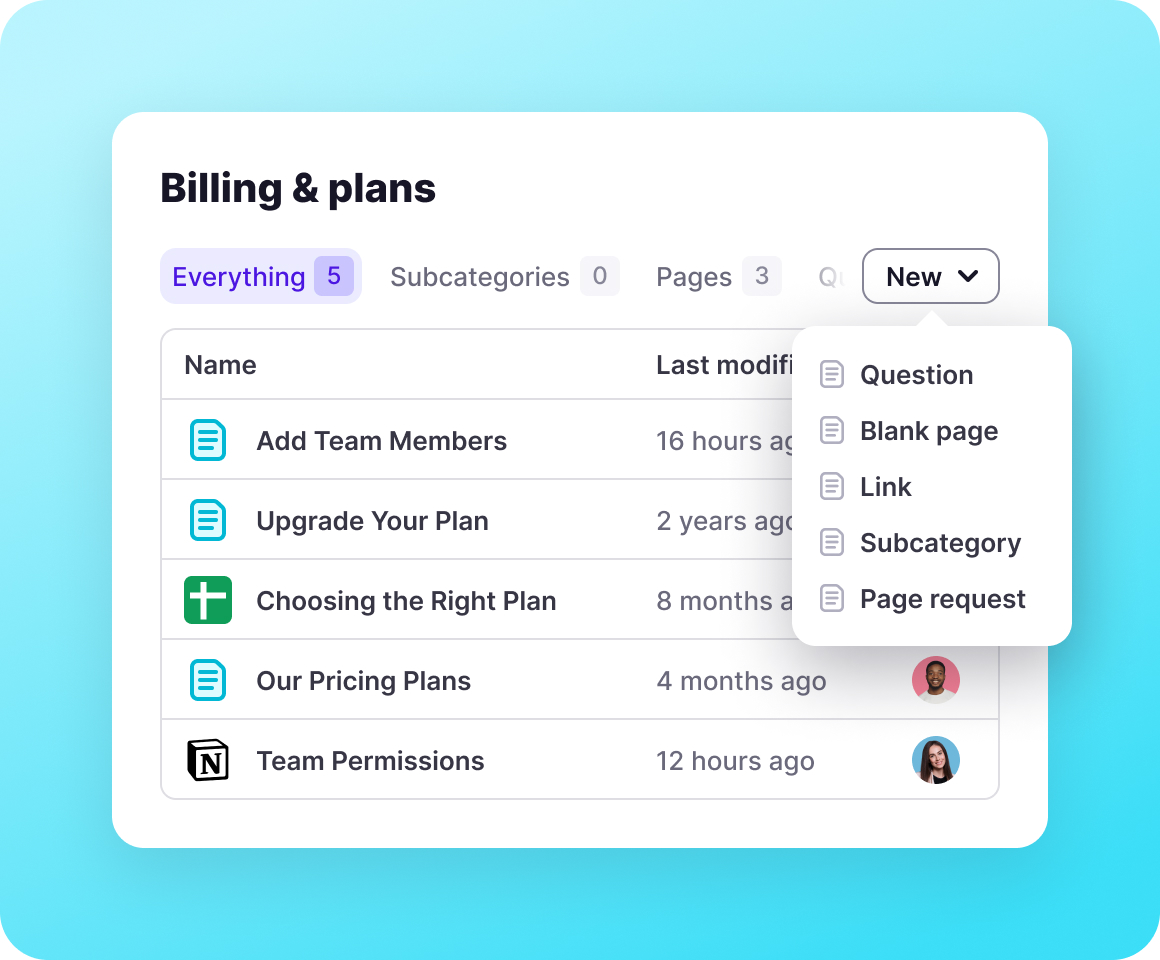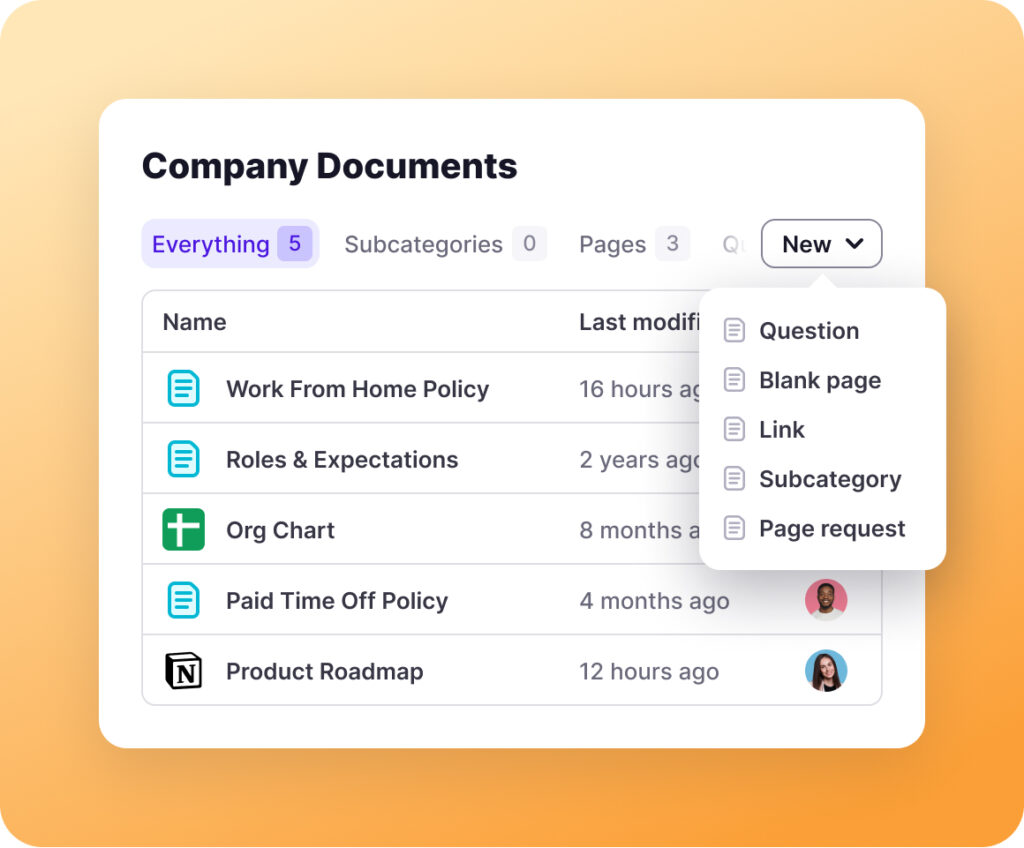Business process improvement is directly linked to profitability.
Inefficient processes result in wasted time and resources. This reduces profitability and prevents you from meeting customer expectations.
Business process mapping and re-engineering works. But it’s old school. According to Bain & Company, the usage rate has dropped from over 60% in 1993 to 19% in 2022.
Modern businesses focus more on process mining and AI-powered business process technologies.
If you want to understand business process management better, this is the guide for you. Below, we explain everything you need to know about business processes.
What are the 3 types of business processes?
All business processes belong to one of the following categories:
1. Operating processes
Operating processes are primary or core business processes. These processes form the value chain and impact your revenue:
Deliver more value
Customers perceive products that make lives easier or improve their sense of well-being as more valuable. If you’re delivering enough value for the price you charge, they’ll continue to do business with you.
To keep prices under control and exceed customer expectations, you need to design operating processes strategically.
Let’s use an example to understand how.
The State of the Connected Consumer report found that 85% of customers expect consistent interactions among departments. But 66% feel they have to re-explain information to different representatives.
This problem reduces your product’s perceived value. You need to redesign your internal processes to offer better support, and therefore, more value.
Don’t just transfer calls to another department. Use solutions that allow warm transfers. Brief the transferee on the customer’s situation.
For other support channels, use a CRM or knowledge management that helps centralize support data. All team members can view this data for context on the customer’s problem.
- See how the support team at Geckoboard uses Tettra to stay on the same page.

Example of business processes in Tettra.
Generate more revenue
There can be quite a few business process improvements to increase revenue in a typical organization.
For example, sales reps spend only 28% of their time selling. The rest is wasted on mundane tasks and bridging communication gaps.
Similarly, marketers spend 16 hours a week on routine tasks. Marketers spend about 7 out of these 16 hours on just two things. The first is sending emails. The second, managing (collecting, organizing, and analyzing) marketing data.
Both tasks can be automated to a great extent. Many businesses now use AI solutions to automate and streamline data collection and cold email responses.
Process automation allows marketers and sales reps to focus on more strategic parts of the job. This can help drive revenue.

Use Tettra to answer questions right inside of Slack.
2. Support processes
Support processes don’t directly impact value or revenue. As the name suggests, they “support” the operating processes.
Support processes are no less important. After all, you can’t run a business without:
- Issuing invoices
- Maintaining the books of accounts
- Cleaning the office premises
- Managing human resources
Smart decision-making is critical to using support processes as a lever for profitability.
Think about it. You can hire an in-house team for bookkeeping and accounting. Or you can outsource.
The right option depends on business size and needs. And choosing the right one can save you a good amount of money.
3. Management processes
Management processes are used to create and monitor operating and support processes.
They ensure that operating and supporting processes are aligned with the business’s overarching goals.
An example of a management process is the top management meeting twice a month to discuss threats and opportunities. Or the management could meet to discuss operating processes such as redesigning the sales process.
Management processes need optimization too.
Sure, you need to meet regularly to discuss operating and support processes. But holding too many meetings can decrease productivity. Reducing meeting frequency by 40% can improve employee productivity by up to 71%.
What is a business process flow?
A business process flow is a visual representation of a process. It illustrates each step in an operating, supporting, or management process.
Creating a business process flow helps understand and visualize complex business processes.
For example, you can create a flowchart for your invoicing process. The steps could include referring to the purchase order, checking the delivery date, and generating the invoice.
The American Society of Quality offers a great guide on business process flowcharts that includes an example.
Visual layouts and business process mapping make reengineering processes easier. Think about it — a business flow gives you an overview of a process’s critical components:
- Manual tasks: These are tasks you need staff for. Examples include approvals or designing client-specific product configurations.
- System tasks: These are repetitive tasks you can automate. Examples include data entry and data transfer.
To improve efficiency, you want as many tasks as possible in a process to be system tasks. You can automate systems tasks to improve process efficiency and profitability.
Automation also offers your team a better work-life balance. 91% of full-time workers expressed in a Salesforce survey that automation solutions save them time and offer better work-life balance.

Store all company documents right inside of Tettra.
What is business process management?
Business process management (BPM) involves creating, modeling, monitoring, analyzing, and optimizing business processes.
BPM isn’t task-specific like task management or project-specific like project management. It looks at entire processes that are repeatable.
Here are three types of business process management:
- Integration-centric BPM: Integration-centric process management focuses on system-driven processes that require minimal human intervention. For example, integrating your invoicing tool with your customer relationship management (CRM) system for real-time data exchange.
- Human-centric BPM: Human-centric process management involves processes in which humans are involved. For example, approving a sales quote based on company policies.
- Document-centric BPM: Document-centric processes involve managing the flow of documents. Examples may include the process of issuing and signing purchase orders or drafting, approving, and signing vendor agreements.
Business process vs. business procedure vs. business function
The three terms might sound similar, but they’re technically different as we explain below:
- Business processes: A business process includes actions that help achieve a specific outcome. Processes can be cross-functional. For example, the invoicing process involves sales, finance, and accounting departments.
- Business procedures: A business procedure is prescriptive. It provides instructions on performing the specific tasks required to complete a process.
- Business functions: Business functions are a group of activities closely related to a general goal. Functions are typically involved in multiple processes. For example, the marketing function is involved in campaign-related processes and budgeting processes, among others.
What is business process technology?
Business process technology includes digital and other tools that make process management easier.
Automating your customer data management by integrating your communications platform and CRM is an excellent example of business process technology in action.
You can also use hardware devices depending on the type of business and processes.
For example, manufacturers use Internet of Things (IoT) devices to automate, streamline, and track the manufacturing process.
The benefits of using technology to optimize processes are massive.
As a McKinsey article states:
“We know of several large organizations [using technological tools] across industries that are on track to achieve efficiencies of 50 percent or more over the next three to five years.”
One of the most remarkable breakthroughs in business process technology was in 2011 when Celonis, a German company, popularized process mining.
Process mining uses a combination of various data science and process management techniques to discover, track, and improve workflows.
Process mining, software integrations, and IoT devices have been around for a while.
AI is up next in transforming business process management. The tools we currently use will become even more powerful with AI’s evolution.
“This AI-driven reengineering is already taking place. Banks are using it to transform wealth management advice for clients. Insurance companies are using AI to make client onboarding and underwriting much easier, and automating claims estimates for auto and home damage with deep learning analysis of photos taken by the insured. Industrial firms are reshaping maintenance and engineering processes.”
Source: HBR
Why are business processes important?
Business processes standardize the way your business operates. It can help standardize everything from hiring employees to compliance audits.
Here’s how creating business processes benefits your business:
- Opportunity to increase efficiency: You can’t identify room for improvement without standardized processes. You find these opportunities only once you collect and compare process data over time.
- Eliminate guesswork: Creating a business wiki outlining key processes eliminates the guesswork. You don’t want employees guessing how to log critical data required for a safety audit, do you?
- Achieve company goals: Strategically designing your processes can help achieve company goals. For example, if you’re trying to become a sustainable business, you might consider eliminating physical paperwork from all processes.
- Cost-effectiveness: Designing and modeling processes strategically allows you to minimize waste and identify faster ways to get things done, favorably impacting your cost structure.

Get more info about processes & documentation from Tettra
- 15 best online documentation tools
- What is process mapping?
- The top process documentation software tools
- Why you need project documentation
- How to build effective product documentation
- How to document your processes
- The types of business process documentation you need
- How good team documentation boosts productivity
Remember to document your processes with Tettra
Once you’ve created processes, you need a knowledge base to store them. Your employees might want to go through them every once in a while. Or you might need to refer to the steps in the process when trying to optimize the process.
Set up a free Tettra account and start your knowledge base today.


